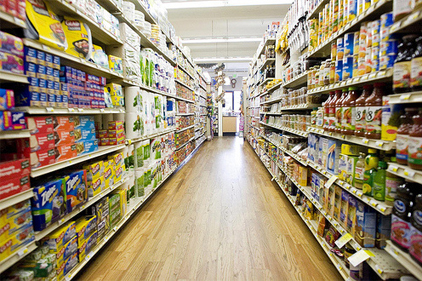
Food packaging physically protects products against damage, prevents product spillage, discourages tampering, preserves freshness and defends against product contamination from microorganisms, air, moisture and toxins. Of course, effective packaging does more than just physically protect products—it informs consumers of a company’s key message, values and priorities. Is your company’s image accurately portrayed by its packaging?
According to Bob Shapiro, CEO of GSC Packaging, although new packaging innovations in the consumer packaged foods industry occur on a constant basis, many food manufacturers have not significantly updated their packaging in years or even decades. “The competitive nature of the consumer products industry means that food manufacturers must keep pace with consumer demands or risk falling behind competitors,” says Shapiro. “Without distinctive packaging, many food products on the market look remarkably similar to competing products. Innovative packaging can help differentiate a product that would otherwise blend in with its competition.”
Is it time to update your product’s packaging? Here are five signs your company’s product packaging is overdue for an update.
1) Your packaging is not user friendly.
Unlike consumer electronics or small appliances that are purchased infrequently, food products are often purchased weekly or monthly. This level of frequency demands a higher degree of user friendliness in food and beverage packaging. In other words, consumers might be somewhat forgiving if they have to take a pair of scissors to a package for a product they purchase only once a year, but they may be much less willing to deal with inconvenient packaging for food products they purchase regularly. User “unfriendly” packages include those that are difficult to open or lack convenient pouring mechanisms. Consumers might also consider a package user “unfriendly” if it tears too easily or isn’t resealable.
2) Your competitors have updated their packaging.
If one type packaging is the norm in your industry, pressure to adopt new packaging is minimal. However, competition heats up when a manufacturer decides to forego traditional packaging and be the first to implement an innovative package design. “The food manufacturer that makes the first move in updating a product’s package design has the benefit of being in control of when the shift begins for the industry,” says Shapiro. “Competitors are then forced to respond with their own updated package design or risk losing market share.”
3) Your packaging is not environmentally friendly.
Food manufacturers are certainly subject to consumer preferences, but they also face increased pressure from industry organizations such as the International Organization for Standardization (ISO), which released a series of new global standards on packaging and the environment in 2012. Complying with the standards is voluntary, says Shapiro, but they raise the bar industry-wide on optimization of packaging systems, minimization of heavy metals and hazardous substances, package reusability, material recovery and energy recovery.
A number of European countries are taking the standards one step further by creating official regulations governing packaging and packaging waste, and US government agencies may follow suit and pursue greater regulation of packaging waste.
4) Your packaging design hasn’t changed in decades.
As important as familiarity and consistency are in building brand trust, they must be paired with innovation and convenience to maintain consumer satisfaction.
“Industries that have not experienced a significant packaging innovation in decades may be missing opportunities to increase consumer satisfaction,” Shapiro says. “For instance, flour was first packaged in paper bags in the 1930s and has been sold in paper bags ever since. However, the paper packaging provides numerous challenges for consumers, such as easily punctured packaging that results in product spillage or product damage due to moisture. Paper packaging is also susceptible to insect infestations. A simple package design update could alleviate these problems and increase consumer satisfaction and brand loyalty.”
5) Your packaging is expensive.
Are newer, less expensive packaging options available? If so, it may be time for an update. Thankfully, more innovative doesn’t always mean more expensive. For instance, as packages become lighter and require less material to produce, cost savings can be realized in the production, shipping and storage of lighter packages. In fact, many forms of traditional rigid packaging, such as glass jars, plastic bottles and metal cans, are often more expensive to produce, store and ship than new forms of flexible packaging. According to the Flexible Packaging Association, flexible packaging:
Offers a 66 percent reduction in solid waste
Uses 88 percent less fossil fuel to produce than rigid containers
Uses 37 percent of the packaging by weight compared to bag-in-a-box packaging
Has one-tenth the packaging weight of metal cans.



